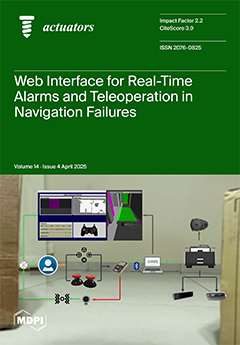Open AccessArticle
Modeling and Analysis of a Cutting Robot for the “Excavation–Backfill–Retention” Integrated Mining and Excavation Equipment
by
Hongwei Ma, Wenda Cui, Chuanwei Wang, Xusheng Xue, Qinghua Mao, Haotian Wang, Limeng Xue, Hao Su, Zukun Yu, Jiashuai Cheng, Yifeng Guo and Kexiang Ma
Viewed by 738
Abstract
To meet the mining requirements of the ’excavation–backfill–retention’ tunneling method for inter-panel coal pillars, this paper proposes an integrated ‘excavation–backfill–retention’ equipment system centered on a cutting robot. An interactive design method was employed to analyze the interaction between mining conditions and the cutting
[...] Read more.
To meet the mining requirements of the ’excavation–backfill–retention’ tunneling method for inter-panel coal pillars, this paper proposes an integrated ‘excavation–backfill–retention’ equipment system centered on a cutting robot. An interactive design method was employed to analyze the interaction between mining conditions and the cutting robot, constructing a ’requirements–functions–structure’ model. The robot integrates a horizontal drum cutting mechanism with a slider shoe walking mechanism, offering enhanced adaptability to various mining conditions. A parameter model was constructed to explore the relationship between the cutting arm length and the robot’s structural parameters under varying mining heights. Using a hierarchical solution method that combines local search and multi−objective genetic algorithms, the robot’s fundamental parameters were determined, enabling the development of a detailed 3D model. A kinematic model based on the modified D–H method was developed to analyze the cutting arm’s swing angle, cylinder extension, propulsion velocity, and cutting velocity in practical mining scenarios. The working range of the height adjustment and feed cylinders at different mining heights was determined through simulation. A dynamics model of the cutting drum was developed, and a coupled simulation using the discrete element method (DEM) was conducted to analyze the relationship between coal/rock hardness, drum load, and cutting depth. The simulation results indicate that as the cutting depth raises the number of cutting teeth in contact with surrounding rock, the cutting depth grows, resulting in a larger reaction force from the coal seam and greater fluctuations in drum load torque. Once the maximum cutting depth is reached, load torque stabilizes within a specific range. Considering cutting efficiency, the robot achieves a maximum cutting velocity of 1 m/min with a cutting depth of 250 mm for rock strength greater than
f3. For rock strength
f3, the maximum cutting velocity is 1 m/min with a 400 mm depth, and for
f2, it is 2 m/min with a 400 mm depth. These findings provide a theoretical foundation for the development of adaptive cutting strategies in mining operations, contributing to improved performance and efficiency in complex mining conditions.
Full article
►▼
Show Figures





